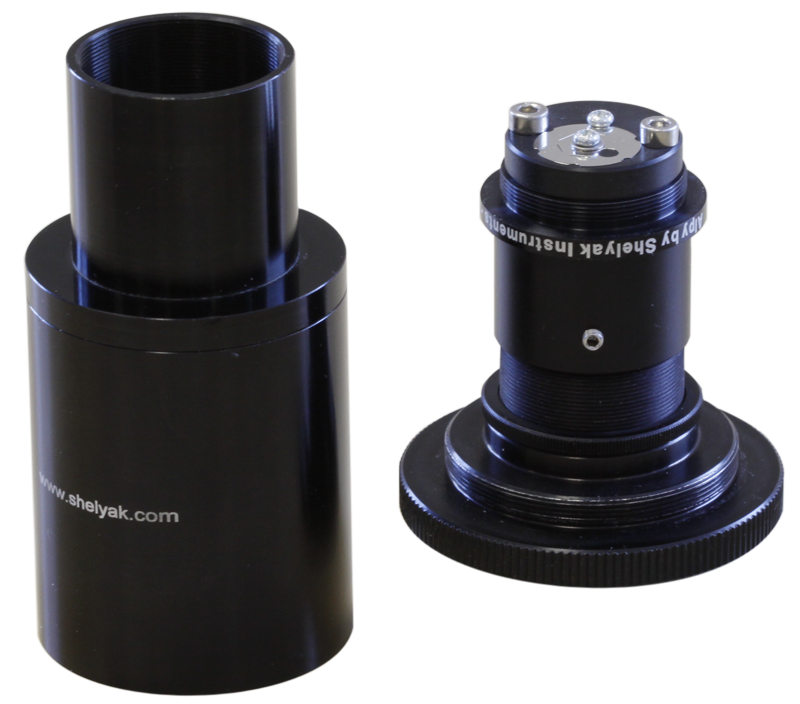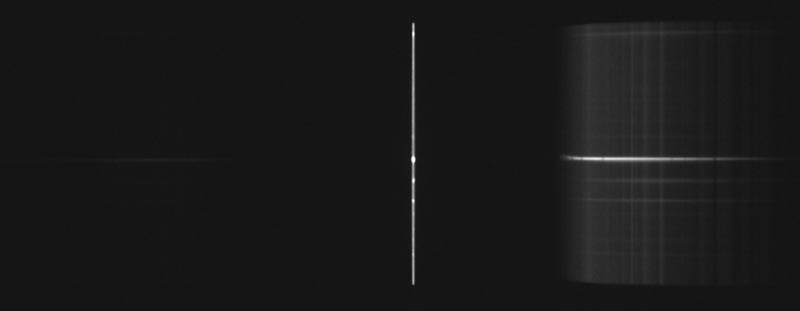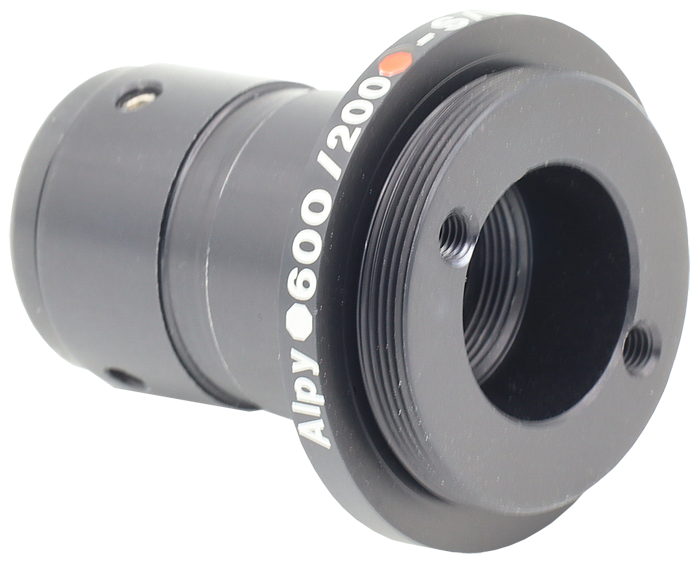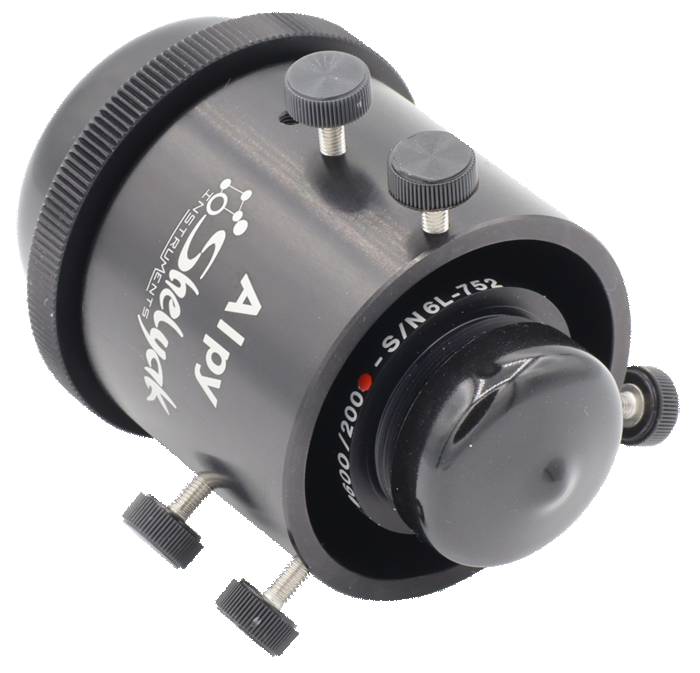
Alpy 200 : a “newcomer” to the Shelyak Instruments range
It’s always a pleasure to announce a new instrument in our catalog, but this pleasure is increased by the fact that this instrument has been widely requested and even suggested by several observers. It was Robin Leadbeater – many years ago – who first alerted us to the need for an instrument derived from the Alpy 600 to observe Supernovae. In fact, there has been growing interest in recent years in very low-resolution spectroscopy, which enables us to observe very faint objects. There are at least two reasons for this interest. Firstly, weak objects are a field of exploration yet to be explored: venturing into this field means gaining access to new, unknown or little-known objects, a far cry from those that are easily accessible and widely catalogued. The second reason is that several large-scale observation programs (Gaia, LSST, etc.) produce hundreds of alerts every night on variations in magnitude or position, and it is important to follow these alerts to characterize the objects in question. These are very often faint objects, but for which a spectrum, even at very low resolution, provides an initial classification. These observations will enable us to quickly identify objects of major astrophysical interest. The Alpy 200 offers this new possibility of very low resolution spectra, even for small instruments (typically telescopes up to 500mm diameter). It was on the basis of his observations that several observers asked us whether such an instrument would soon be available in the Shelyak range.
More recently, we received a formal request from the Rapas project, a collaboration between Paris Observatory (led by Michel Dennefeld), and a team of amateur astronomers led by Thierry Midavaine. The aim of this project is to monitor Gaia alerts using very low-resolution spectroscopy. It was this project that led us to take action, and which enables us to offer you this new instrument today.
Description
The Alpy 200 complements the Alpy 600. It is identical on a mechanical level (it therefore has the same dimensions), only the grism which disperses the flow of light is different as well as its angle of inclination. The 200 gr/mm grism, 3 times less dispersive than the Alpy 600, is specially dedicated to producing spectra of very faint objects such as the spectra of quasars or distant galaxies, supernovae and candidate planetary nebulae. Its resolution is around R=130 (with a slit of 23 µm).
Like the Alpy 600, it can be used with any optics (refractor or reflector telescope) having an f/d ratio close to 4 to 5 and will give its full potential on optics diameters of 200 to 250mm. It can of course be used on larger optics but from 355mm in diameter, it will be necessary to use a wider slit of 35µm, which will reduce the spectral resolution. And on larger diameter telescopes (above 300mm), it will be better to use an Alpy 600 with a wide slit and binning.
Using Alpy 200
The Alpy 200 is recommended for users who already have good experience and good command of low resolution spectroscopy on weak targets, because you must be comfortable with pointing and centering a target which is at the limit of visibility on the autoguiding sensor and maintain it in the slot as precisely as possible throughout the acquisitions. People who already have experience with an ALPY 600 will have an easier time producing their first Alpy 200 spectrum.
Unlike the Alpy 600, the grism is not tilted (in fact, it is no longer a grism, but a simple grating!), which allows us to have the zero order of the spectrum in the middle of the sensor. the spectral camera and to have on the left, order -1 of the spectrum (lower in flux than order 1) and on the right, order 1 which we will use for spectral processing. Depending on the software used and in order for it to correctly process the spectrum, it will be appropriate to window the raw images by removing the zero order and only keeping the right part of the spectrum containing the 1st order. We can also carry out this windowing at the time of acquisitions, which can then be simpler to process raw images in the right format from the start.
For calibration and taking into account the spectral resolution of the Alpy 200, the simplest is to produce the spectrum of a reference star of type O, A or B (essentially comprising hydrogen lines). This reference star will make it possible to achieve two essential points of treatment:
- Calculate the instrumental response of your instrument.
- Calculate the calibration polynomial with the hydrogen lines for which each wavelength is known.
The instrumental response and the calibration polynomial will then be applied to the spectrum of the target by realigning the polynomial to the auroral line [O I]5577.35 Å which can be seen on a spectrum whose exposure time is greater than approximately 600s . This method also makes it possible to completely avoid the use of an Ar/Ne lamp.
Here is the spectrum of the star TYC-2133-79-1 of magnitude V=12.72 and spectral type A0V produced with a 12-inch RC equipped with a CCDT67 focal reducer.
The graph shows the spectrum of this star (in red) compared to a spectrum from the Pickles atlas type A0V (in black). the spectrum was calibrated according to the method described above.


First result
The first to be able to use the Alpy 200 in the field was Robin Leadbeater in England. He produced a spectrum of a supernovae of magnitude Vg=18.6: Sn 2023 xvt.
Other observations will be carried out in the coming weeks on quasars and candidate planetary nebulae.

Commercial offers
The Alpy 200 is offered in 3 versions:
- the complete Alpy 200 (Ref. PF0083) on the same basis as the ALPY 600, only the grism changes in this configuration.
It must be associated with a guidance module (Ref. PF0036) and a calibration module (Ref. PF0037) to be complete.
- The Alpy 200 core module (Ref. SE0275). This module is aimed at those of you who already have an Alpy 600, and who want to have an Alpy 200 at a lower cost. This is the most economical version. It requires dismantling the Alpy 600 to install this module and using the slit of your Alpy 600 as well as some of the mechanical parts.
- An intermediate version to quickly switch from an Alpy 600 to an Alpy 200 and vice versa, without disturbing the settings too much. (Ref. SE0276). You will need to recover the slit of your Alpy 600 as well as part of the mechanical parts.



Conclusion
We have done everything we can to offer you a simple and affordable instrument that opens up new observation perspectives. Whether to explore an unknown sky or to make a useful contribution to research, the Alpy 200 is a new string to the spectro bow.
The ball is now in your court! We of course remain at your disposal to help you in your observation process, and we monitor your messages which announce new observations – it is always a huge satisfaction to see what you do with our instruments!
Olivier Garde & François Cochard
